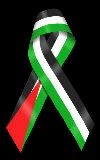
Lia Nickson illustration
for Edwin Rolfe's book
First Love and Other Poems
"And we must remember cleanly why we fought,
clearly why we left these inadequate shores
and turned our eyes, our hearts, Spainward. We must never
lie to ourselves again, deceive ourselves with dreams
that make sleep sluggish. Our world
is new now, clean and clear; our eyes can see
the perfect bone and tissue now, remembering
the flesh cut open, the gangrened limbs, the rot
that almost, almost...but did not reach the heart.
And if we find all known things changed
now after two years amid fabulous truth;
if we find dulled the once sharp edges
of trivial loves; even if we find
our truest loves indifferent, even false -
we must remember cleanly why we went,
clearly why we fought; and returning see
with truth's unfilmed eye what remains constant,
the loyalties which endure, the loves that grow,
the certainties men need, live for, die to build,
the certainties that make all living tolerable."
"Postscript to a War"
Edwin Rolfe
for Michael Gordon





